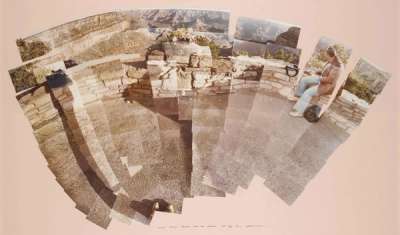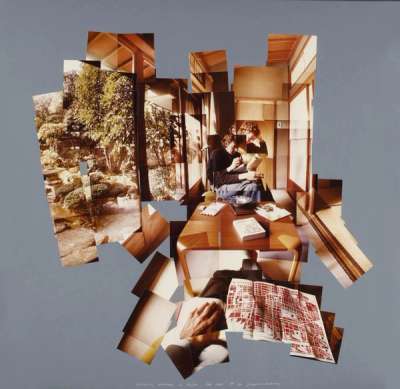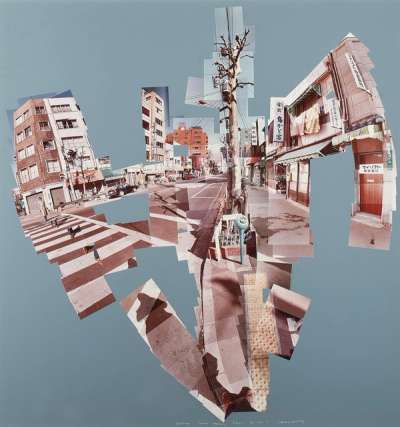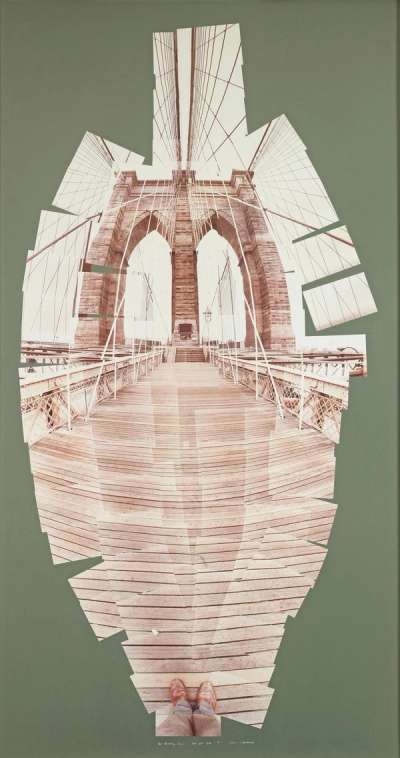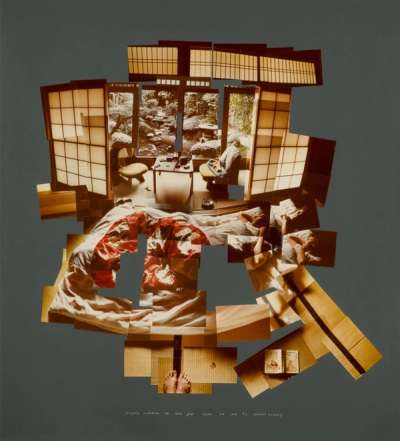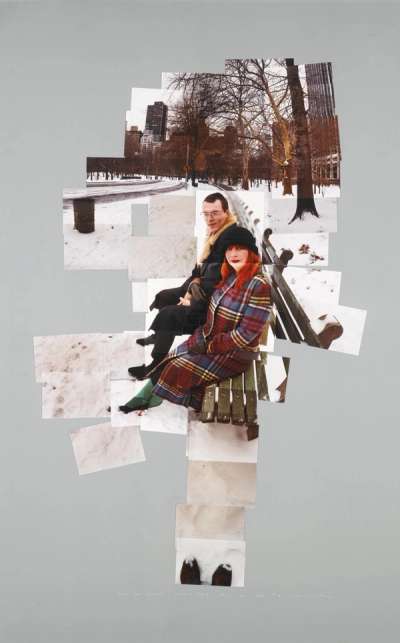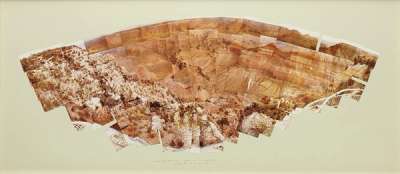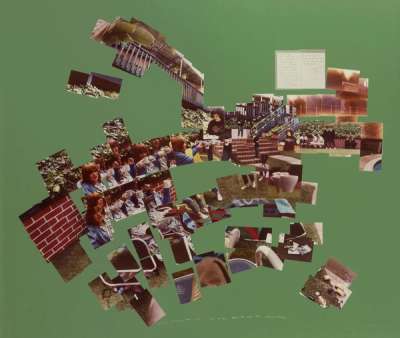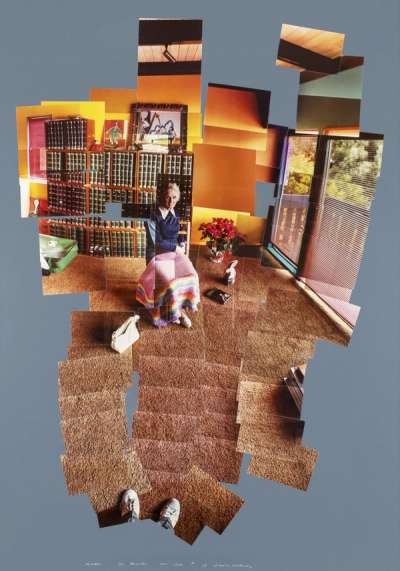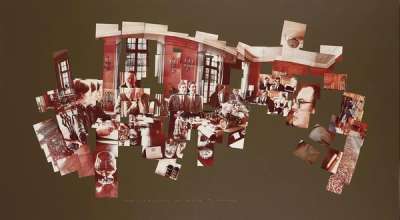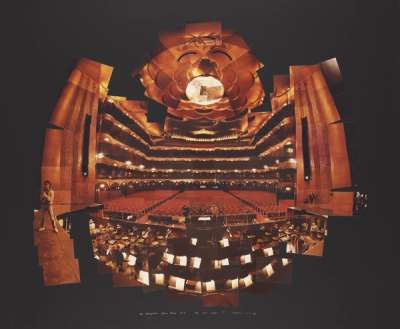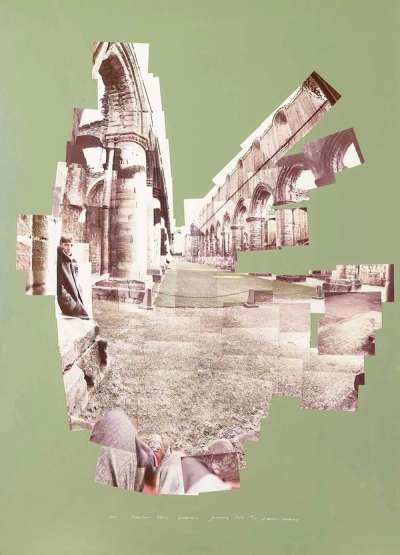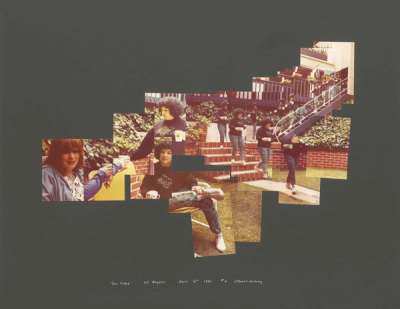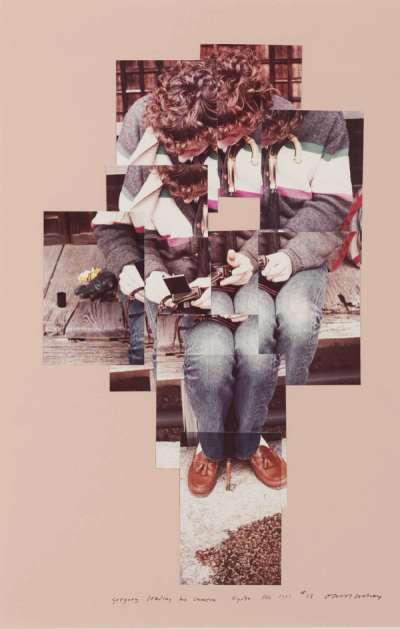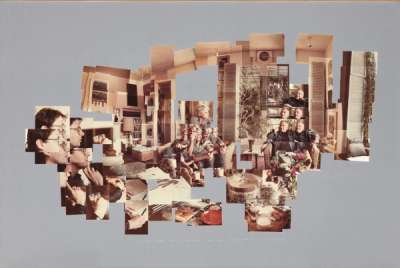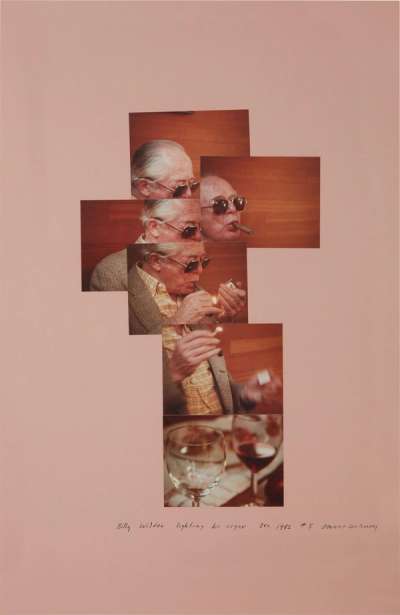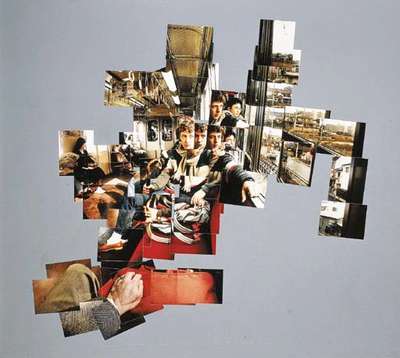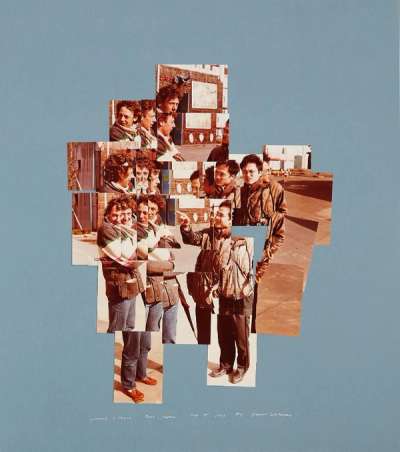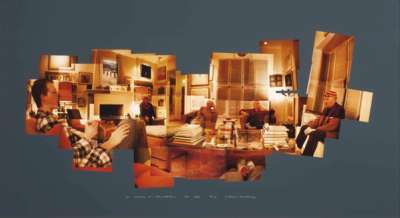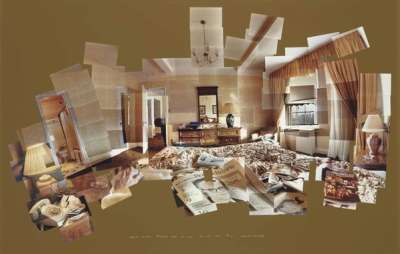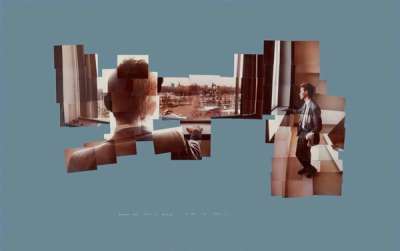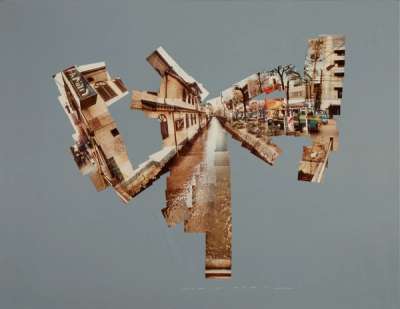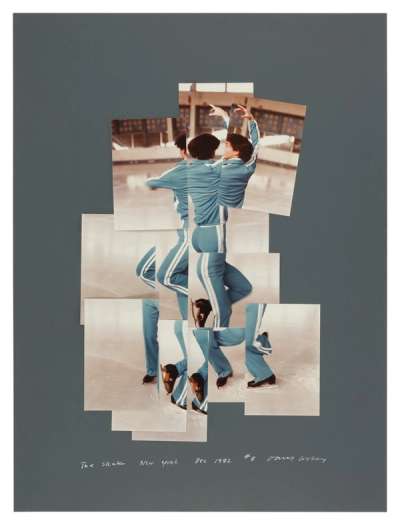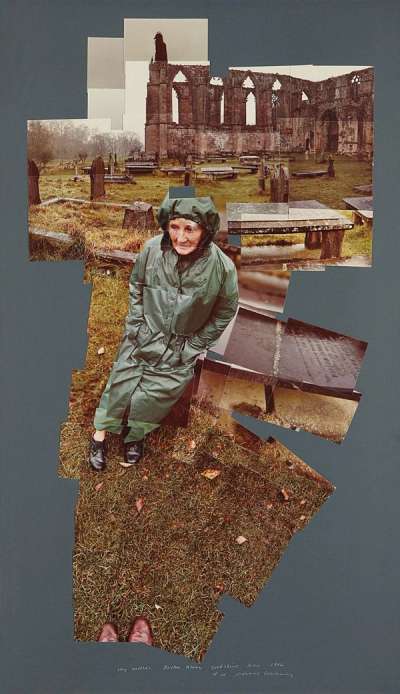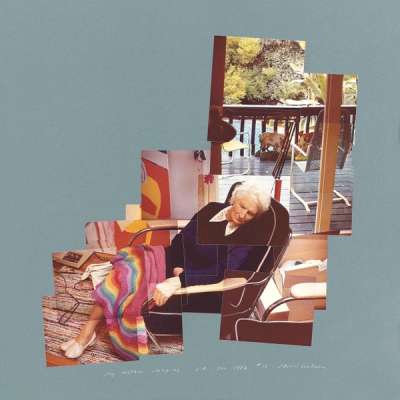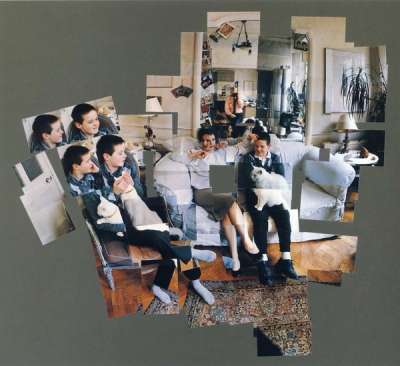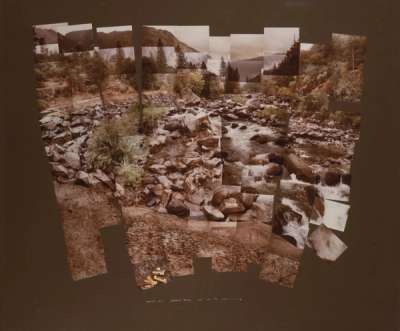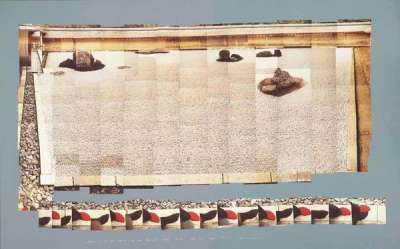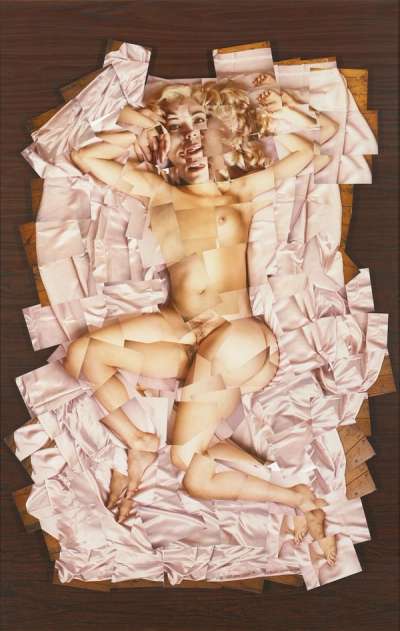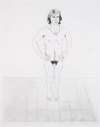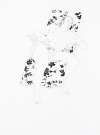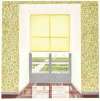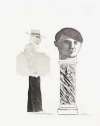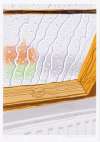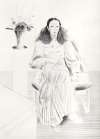Photo
Collages
David Hockney began experimenting with photo collages in the early ’80s. The prints in this series reflect Hockney’s interest in optics, seeing him extend his experimentation to family, friends, landscapes, and interiors. The singular viewpoint set rigidly as an artistic standard in comparatively recent history becomes once again mutable in Hockney’s composite images.
David Hockney Photo Collages For sale
Photo Collages Value (5 Years)
Works from the Photo Collages series by David Hockney have a strong market value presence, with 101 auction appearances. Top performing works have achieved standout auction results, with peak hammer prices of £64062. Over the past 12 months, average values across the series have ranged from £5579 to £47002. The series shows an average annual growth rate of 7.33%.
Photo Collages Market value
Auction Results
| Artwork | Auction Date | Auction House | Return to Seller | Hammer Price | Buyer Paid |
|---|---|---|---|---|---|
 My Mother, Bolton Abbey, Yorkshire, November David Hockney Signed Print | 7 Oct 2025 | Bonhams Los Angeles | £4,675 | £5,500 | £7,000 |
 Gregory Reading In Kyoto David Hockney Signed Print | 7 Oct 2025 | Bonhams Los Angeles | £13,600 | £16,000 | £21,000 |
 George, Blanche, Celia, Albert And Percy, London, January David Hockney Signed Print | 25 Jun 2025 | Sotheby's London | £15,300 | £18,000 | £24,000 |
 The Desk David Hockney Signed Print | 8 Apr 2025 | Bonhams Los Angeles | £38,250 | £45,000 | £60,000 |
 Ian Fountains Abbey, Yorkshire, January 1983 David Hockney Signed Print | 28 Nov 2024 | Waddington's | £11,900 | £14,000 | £17,000 |
 Gregory Watching The Snow Fall, Kyoto, Feb 21st 1983 David Hockney Signed Print | 8 Mar 2024 | Los Angeles Modern Auctions | £7,650 | £9,000 | £12,000 |
 Merced River, Yosemite Valley David Hockney Signed Print | 10 Nov 2023 | Uppsala Auktionskammare | £23,800 | £28,000 | £35,000 |
 Raymond Foye Looking At Brooklyn David Hockney Signed Print | 3 Mar 2023 | Phillips London | £20,400 | £24,000 | £35,000 |
Sell Your Art
with Us
with Us
Join Our Network of Collectors. Buy, Sell and Track Demand
Meaning & Analysis
Always one to experiment with the boundaries of a medium, Hockney’s almost-cubist Photo Collages play with perspective and fragmentation.
Always one to experiment with the boundaries of a medium, Hockney’s almost-cubist Photo Collages play with perspective and fragmentation. He had long been interested in photography and its potential to fragment a scene into its disparate parts but while earlier collages saw him arranging photographs in a grid, in these later works he overlays the images to create a Cubist effect. He called these works ‘joiners’. Allowing for movement and fluidity in perspective Hockney believed these pieces were closer to how the eye actually sees, whereas one image, taken by a lens from just one angle, cannot come anywhere near the physical perception of a person, object or scene.
The works in this collection reflect Hockney’s long running interest in optics and perspective and sees him extend it onto family members and friends as well as landscapes and interiors. We are presented with familiar figures from his prints such as Ann Upton, Celia Birtwell and Gregory Evans as well as familiar settings such as the Grand Canyon and the pool of his home in Los Angeles. Whereas before Hockney had dismissed photography as ‘All right if you don’t mind looking at the world from the point of view of a paralysed cyclops-for a split second,’ here we see him engaged in a new fascination with the medium. After so long challenging himself across the mediums of paint and print it is unsurprising that he would finally come round to the medium that descends is often described as ‘drawing with light’. What he saw as a fixed viewpoint became something fluid and dynamic when doubled endlessly to create a composite image.
With works such as Freda Bringing Ann & Me A Cup Of Tea he pushes the medium even further, allowing the coloured background to add another element to the composition, while details of the scene spiral out from the middle. Meanwhile in George, Blanche, Celia, Albert And Percy, London, January the traditional family portrait is subverted, the many photographs adding layers of time and movement, documenting changes in expression and light, to become a tableau vivant.
One of Hockney’s most famous works in this collection is Walking In The Zen Garden At The Ryoanji Temple, which shows the famous Japanese garden only lightly fragmented, its quiet seriousness lifted by the repetition of the mismatched red and black socks at the bottom of the frame. This way of making prints became a crucial part of Hockney’s work while travelling and there are a number of photo collages from Japan as well as numerous road trips in America, including a composite image of the view from the south rim of the Grand Canyon which adds another layer of complexity to this already unfathomable landscape.
